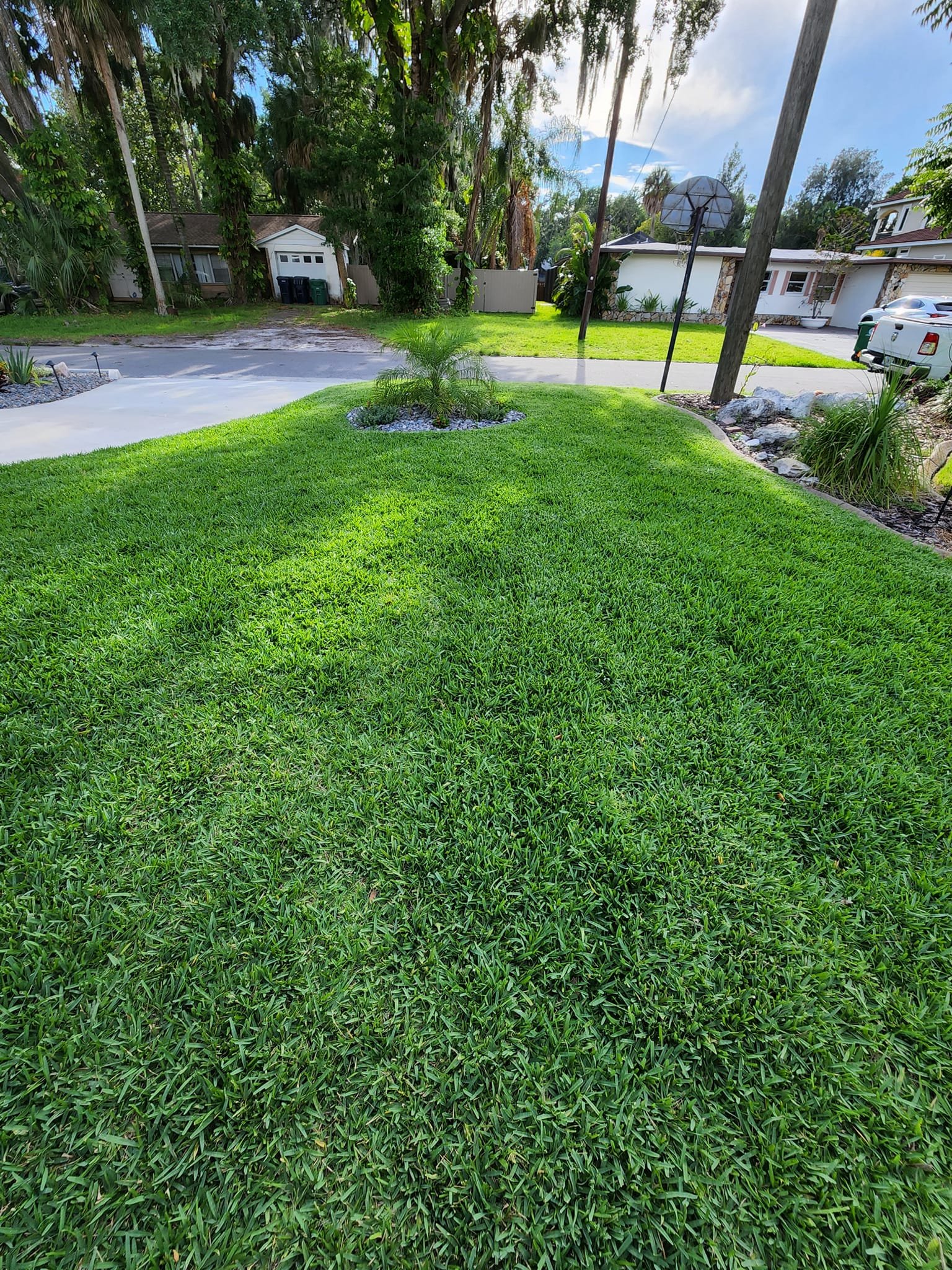Introduction
When it comes to maintaining a lush and vibrant lawn, understanding the fertilization needs specific to your region is crucial. Residents of Valrico, FL, are fortunate to live in an area with a climate ideal for growing beautiful landscapes. However, the unique environmental conditions present challenges that require tailored lawn care strategies. In this comprehensive guide, we'll explore the multifaceted aspects of fertilization needs for lawns in Valrico. With insights from local experts like Tarpon Lawn & Pest, you'll be well-equipped to transform your yard into an oasis.
Understanding Fertilization Needs for Lawns in Valrico, FL
Fertilization is more than just sprinkling some granules on your grass; it's about nurturing the soil and providing essential nutrients to support vigorous growth. The sandy soils common in Florida can sometimes lead to nutrient deficiencies if not managed properly. Regular fertilization ensures that your grass receives adequate nitrogen, phosphorus, and potassium—key components that contribute to its overall health.
Why Is Fertilization Important?
Fertilization plays a pivotal role in:
- Promoting Healthy Growth: Nutrients encourage root development and blade growth. Enhancing Color: Proper fertilization leads to deeper green hues. Improving Disease Resistance: A well-nourished lawn is less susceptible to pests and diseases.
By understanding these factors, homeowners can create a tailored lawn care strategy that meets their specific needs.
Factors Affecting Lawn Fertilization in Valrico
Climate Considerations
Valrico enjoys a subtropical climate characterized by hot summers and mild winters. This environment influences:
- Grass Types: Warm-season grasses like Bermuda or Zoysia thrive here. Fertilizer Timing: Optimal fertilization periods often coincide with growing seasons.
Soil Composition
The sandy loam found in Valrico may require different treatments compared to clay soils elsewhere:
- Drainage: Sandy soils drain quickly but may leach nutrients. pH Levels: Regular soil testing helps determine if amendments are necessary.
Common Grass Types in Valrico
Bermudagrass
One of the most popular choices for homeowners due to its durability and heat tolerance.
Advantages
- Fast establishment Drought resistance
Disadvantages
- Requires frequent mowing Can become invasive
Zoysiagrass
Ideal for those seeking a dense lawn that withstands foot traffic.

Advantages
- Tolerates shade better than Bermudagrass Thick mat reduces weed growth
Disadvantages
- Slow to establish Higher maintenance during establishment phase
Types of Fertilizers Available
Granular Fertilizers
These are commonly used due to their long-lasting effects. They release nutrients slowly over time.
Application Tips
Apply during early spring or late summer. Use a spreader for even distribution.Liquid Fertilizers
Perfect for quick nutrient uptake, especially when grass shows signs of stress.
Application Tips
Best applied during active growth periods. Ensure even coverage using a sprayer.Nutrient Requirements for Lawns in Valrico
Nitrogen (N)
Essential for promoting lush green growth and leaf development.
How Much Nitrogen?
Most lawns require 1–2 pounds of nitrogen per 1000 square feet annually.
Phosphorus (P)
Crucial during the https://tarponlandscaping.com/ establishment phase as it promotes root development.
How Much Phosphorus?
Typically required only during seeding or overseeding at rates around 0.5 pounds per 1000 square feet.
Potassium (K)
Helps with drought resistance and overall plant health.
How Much Potassium?
Similar to phosphorus; apply based on soil test recommendations but generally around 1 pound per 1000 square feet annually is sufficient.
Creating a Fertilization Schedule
To maintain optimal lawn health, follow this simple schedule:
| Season | Type of Application | Notes | |---------------|------------------------|----------------------------------| | Spring | Granular Nitrogen | Pre-emergent herbicide optional | | Summer | Liquid Nitrogen | Monitor moisture levels | | Fall | Granular Potassium | Prepare lawn for winter | | Winter | Soil Test & Amendments | Adjust pH if necessary |

This schedule aligns with natural growth cycles and ensures your lawn gets what it needs when it needs it most!
Signs Your Lawn Needs Fertilization
Color Changes
If your grass starts fading into dull shades of yellow or brown, it's time for some nourishment!
Growth Patterns
Watch out! Stunted growth can indicate nutrient deficiency—especially nitrogen!
Best Practices for Applying Fertilizer
Timing Is Everything!
Applying fertilizer at the right time maximizes absorption while minimizing waste:
Morning hours are generally ideal. Avoid applying before heavy rainstorms which could wash away nutrients.Even Distribution Matters!
Use a broadcast spreader or spray applicator to ensure every inch of your lawn receives equal treatment:
Overlapping passes help avoid missed patches. Follow manufacturer guidelines for proper application rates.Understanding Soil Testing and Its Importance
Conducting regular soil tests helps you understand nutrient availability and pH levels better:

Benefits of Soil Testing
Tailor fertilizer applications precisely. Save money by avoiding unnecessary applications. Protect the environment by preventing over-fertilizing which can lead to runoff pollution.Regular testing should be conducted every one to three years depending on previous results and changing conditions!
Environmental Impact of Lawn Care Practices in Valrico FL
Sustainable practices go beyond aesthetics; they also protect our local ecosystem:
Minimize chemical runoff by following recommended application rates. Employ organic options where feasible—less harm means healthier surroundings! Opt for slow-release fertilizers that minimize leaching into waterways.Embrace sustainability through education; it’s all part of responsible lawn care!
FAQs About Lawn Care in Valrico FL
Q1: What type of fertilizer should I use?
A: A balanced fertilizer with equal parts N-P-K works well unless soil tests suggest otherwise!
Q2: How often should I fertilize my lawn?
A: Generally, two times a year—once in spring and once in late summer—works best!
Q3: What time of year is best?
A: Early spring when grass begins actively growing is ideal; follow up again later in summer!
Q4: Should I water after applying fertilizer?
A: Yes! Watering helps activate the nutrients within the soil while preventing burn damage from concentrated granules!
Q5: Can I over-fertilize my lawn?
A: Absolutely! Over-fertilizing can lead not only to burned grass but also increase susceptibility disease due caused stress!
Q6: Why test my soil?
A: Soil testing reveals critical information regarding pH levels and nutrient content allowing you tailor applications accordingly ensure optimal results!
Conclusion
In conclusion, understanding fertilization needs specific to lawns in Valrico, FL opens up opportunities for achieving stunning green spaces that enhance property value while promoting environmental health! By embracing effective practices outlined above—from timing applications correctly utilizing suitable products—you'll pave the way towards creating an enviable outdoor sanctuary right outside your door!
Don’t forget about expert services available locally through companies like Tarpon Lawn & Pest—they bring experience expertise authority trustworthiness ensuring every aspect maintenance handled professionally without hassle! So get ready; soon enough neighbors will be green with envy at sight lush vibrant landscape you’ve cultivated through knowledge dedication hard work!
Embrace this journey toward flourishing lawns—it’s worth every effort invested along way bringing joy satisfaction life outdoor spaces shared friends family alike!